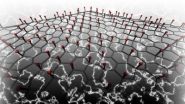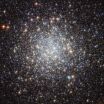(Press-News.org) GREENBELT, Md. -- Researchers and flight crew with NASA's Operation IceBridge, an airborne mission to study changes in polar ice, began another season of science activity with the start of the 2012 Arctic campaign on March 13. From mid-March through mid-May, a modified P-3 from NASA's Wallops Flight Facility in Wallops Island, Va., will conduct daily missions out of Thule and Kangerlussuaq, Greenland —with one flight to Fairbanks, Alaska and back—to measure sea and land ice. The campaign will also feature instrument tests, continued international collaboration and educational activities.
After NASA's Ice, Cloud and Land Elevation Satellite's (ICESat) stopped collecting data in 2009, Operation IceBridge began as a way to continue the multi-year record of ice elevation measurements until the launch of ICESat-2 in 2016. IceBridge gathers data during annual campaigns over the Arctic starting in March and Antarctic starting in October.
IceBridge flights will measure both previously surveyed sites, such as Greenland's Jakobshavn Glacier, and unstudied areas of sea ice, such as the Beaufort Sea north of Alaska. "The most important sea ice flights are the transits between Thule and Fairbanks," said IceBridge project scientist Michael Studinger.
The P-3 carries an array of instruments for measuring ice surface elevation and thickness and snow depth, and will be joined by other aircraft later in the campaign. The Airborne Topographic Mapper uses lasers to measure changes in surface elevation and uses these readings to create elevation maps. Radar instruments from the Center for Remote Sensing of Ice Sheets at the University of Kansas in Lawrence, Kan., show snow and ice thickness and allow scientists to see through land ice to the bedrock below. A gravimeter from Sander Geophysics and Columbia University's Lamont-Doherty Earth Observatory, Palisades, N.Y., similarly lets researchers determine water depth beneath floating ice.
A Falcon jet from NASA's Langley Research Center in Hampton, Va., carrying a high-altitude laser altimeter, the Land, Vegetation, and Ice Sensor (LVIS) will join the P-3 on April 19. The Falcon flies higher and faster than the P-3, which allows it to cover longer flight lines and enables LVIS to survey a 2-km (1.2 mile) wide swath of ice. The Falcon will play a critical role in surveying near coastal areas of Greenland, and in sea ice flights out of Thule.
IceBridge will also join in efforts to validate and calibrate sea ice measurements by CryoSat-2, the European Space Agency's ice-monitoring satellite. ESA's airborne calibration campaign, CryoVEx, aims to ensure that CryoSat-2's radar readings are accurate. "One of our prime goals in Thule will be to underfly a European CryoSat sea ice track within two hours of its passage over the sea ice north of Greenland," said acting project manager Seelye Martin.
"Last year's collaboration with ESA proved successful and this year is expected to provide even more data," Studinger said.
Depending on flight schedules, either the P-3 or the Falcon will also take part in testing a new laser altimeter that simulates the one on ICESat-2. An ER-2, a research version of the U-2, from NASA's Dryden Flight Research Center, Edwards, Calif., will carry the Multiple Altimeter Beam Experimental Lidar (MABEL). The ER-2 will fly out of Keflavik, Iceland, and climb to 60,000 feet on its way to Greenland to measure the same tracks as the P-3. "The instruments on the P-3 and Falcon are more mature," said assistant research scientist Kelly Brunt. "This will test MABEL's accuracy and help scientists develop better algorithms."
Something else new to this year's campaign is the participation of science teachers from the United States, Denmark and Greenland. In mid-April, Tim Spuck, a high school teacher from Oil City, Penn., will join two educators from Greenland and two from Denmark in Kangerlussuaq. There they will spend several days working with IceBridge scientists and participating in survey flights. Spuck's time in Greenland is thanks to PolarTREC, a National Science Foundation program designed to bring teachers and polar scientists together and give educators hands-on research experience. "I hope to get a better understanding of polar science and bring that knowledge back home to both students and educators," said Spuck.
### END
NASA's IceBridge 2012 Arctic campaign takes to the skies
2012-03-19
ELSE PRESS RELEASES FROM THIS DATE:
Now a cyclone, NASA sees Lua closer to a landfall in northern Australia
2012-03-19
Warnings are in effect and evacuations have taken place along the northern Australia coast near Port Hedland. NASA's Aqua satellite passed over Lau as it strengthened into a Cyclone today, March 15, 2012.
On March 15, 2012 at 02:31 UTC, the Moderate Resolution Imaging Spectroradiometer (MODIS) instrument onboard NASA's Aqua satellite captured a visible image of Cyclone Lua when it was about 400 nautical miles northwest of Port Hedland, Australia. In the image, the bulk of clouds and showers appear to be over the northern and western quadrants of the storm. Satellite imagery ...
White rice increases risk of Type 2 diabetes
2012-03-19
The risk of type 2 diabetes is significantly increased if white rice is eaten regularly, claims a study published today on bmj.com.
The authors from the Harvard School of Public Health look at previous studies and evidence of the association between eating white rice and the risk of type 2 diabetes. Their study seeks to determine whether this risk is dependent on the amount of rice consumed and if the association is stronger for the Asian population, who tend to eat more white rice than the Western world.
The authors analysed the results of four studies: two in Asian ...
NIH brain imaging study finds evidence of basis for caregiving impulse
2012-03-19
Distinct patterns of activity—which may indicate a predisposition to care for infants-- appear in the brains of adults who view an image of an infant face—even when the child is not theirs, according to a study by researchers at the National Institutes of Health and in Germany, Italy, and Japan.
Seeing images of infant faces appeared to activate in the adult's brains circuits that reflect preparation for movement and speech as well as feelings of reward.
The findings raise the possibility that studying this activity will yield insights into care giving behavior, but ...
Straintronics: Engineers create piezoelectric graphene
2012-03-19
In what became known as the 'Scotch tape technique," researchers first extracted graphene with a piece of adhesive in 2004. Graphene is a single layer of carbon atoms arranged in a honeycomb, hexagonal pattern. It looks like chicken wire.
Graphene is a wonder material. It is one-hundred-times better at conducting electricity than silicon. It is stronger than diamond. And, at just one atom thick, it is so thin as to be essentially a two-dimensional material. Such promising physics have made graphene the most studied substance of the last decade, particularly in nanotechnology. ...
Inflammatory biomarkers improve the clinical prediction of mortality in COPD
2012-03-19
The addition of changes in inflammatory biomarkers to established clinical variables improves the prediction of mortality in patients with chronic obstructive pulmonary disease (COPD), according to a new study.
"COPD is characterized by low-grade inflammation, so we hypothesized that the addition of inflammatory biomarkers to established predictive factors would improve the prediction of mortality," said lead author Bartolome Celli, lecturer in medicine at Harvard Medical School and member of the Pulmonary and Critical Care Division of Brigham and Women's Hospital in ...
Art improves stroke survivors' quality of life
2012-03-19
Copenhagen, 16 March 2012: Stroke survivors who like art have a significantly higher quality of life than those who do not, according to new research. Patients who appreciated music, painting and theatre recovered better from their stroke than patients who did not.
The research was presented at the 12th Annual Spring Meeting on Cardiovascular Nursing, 16-17 March, in Copenhagen, Denmark.
Stroke is the third cause of death in the western world and the first cause of disability in adults. More and more older people are having strokes and undergoing recovery. "We know ...
Depression increases death risk in coronary stent patients
2012-03-19
Copenhagen, 16 March 2012: Depression increases the risk of death in patients who have a coronary stent implanted. After seven years of follow up, depressed patients were 1.5 times more likely to have died than non-depressed patients. The findings were independent of age, gender, clinical characteristics, anxiety and the distressed (Type D) personality.
The research was presented at the 12th Annual Spring Meeting on Cardiovascular Nursing, 16-17 March, in Copenhagen, Denmark.
Depression has been associated with poor outcomes in coronary artery disease but previous ...
Poor dental hygiene puts congenital heart disease patients at risk of further heart damage
2012-03-19
Copenhagen, 16 March 2012: Poor dental hygiene behaviours in patients with congenital heart disease are increasing their risk of endocarditis. Teens with congenital heart disease floss, brush and visit the dentist less than their peers. But they have healthier behaviours when it comes to alcohol, cigarettes and illicit drugs. Adults with single ventricle physiology (a type of congenital heart disease) also have poorer dental hygiene practices than their peers despite having better health behaviours overall.
The findings were presented in two studies at the 12th Annual ...
Glittering jewels of Messier 9
2012-03-19
Messier 9, pictured here, is a globular cluster, a roughly spherical swarm of stars that lies around 25 000 light-years from Earth, near the centre of the Milky Way, so close that the gravitational forces from the galactic centre pull it slightly out of shape.
Globular clusters are thought to harbour some of the oldest stars in our galaxy, born when the Universe was just a small fraction of its current age. As well as being far older than the Sun — around twice its age — the stars of Messier 9 also have a markedly different composition, and are enriched with far fewer ...
'Gravity is climate' - 10 years of climate research satellites GRACE
2012-03-19
For the first time, the melting of glaciers in Greenland could now be measured with high accuracy from space. Just in time for the tenth anniversary of the twin satellites GRACE (Gravity Recovery and Climate Experiment) a sharp image has surface, which also renders the spatial distribution of the glacial melt more precisely. The Greenland ice shield had to cope with up to 240 gigatons of mass loss between 2002 and 2011. This corresponds to a sea level rise of about 0.7 mm per year. These statements were made possible by the high-precision measurements of the GRACE mission, ...


